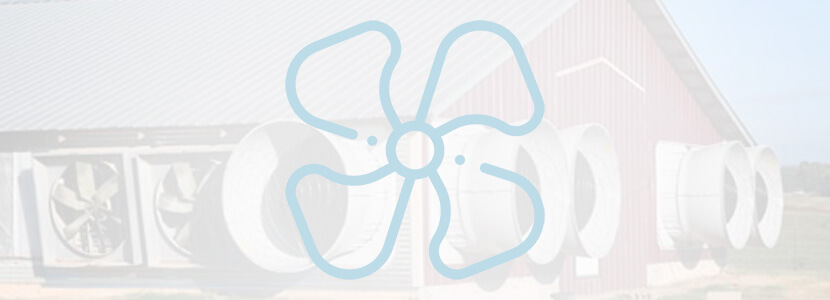Content available at: Español (Spanish) Português (Portuguese (Brazil))
Variable frequency drive “electronic” fans or tunnel fans can result in dramatic energy savings.
The amount of electricity used by an exhaust fan is not determined by the size of the motor but rather how fast the tunnel fans blades are rotating.
Image 1. Skov 55″ variable speed BlueFan.
Image 2. Traditional 1990’s 48″ slant-wall fan.
The faster a fan spins, the greater the amount of air moved, and the greater the power consumed.
As a result you can modify both the amount of air moved and the power consumed by a tunnel fan by simply increasing or decreasing the size of the motor pulley, which would change the speed at which the fan blades rotate.
FAN AIR MOVEMENT
Interestingly though the air moving capacity of a fan increases proportionally with fan speed, power usage increases exponentially with fan speed.
If fan speed is increased by 20%, the air moving capacity of the fan will increase by roughly 20%.
For example, if you have a fan that moves 20,000 cfm that is rotating at 400 rpm and you increase the fan speed to 480 rpm by installing a larger motor pulley the air moving capacity of the fan will increase 20% increase to 24,000 cfm.
ENERGY USED BY THE FAN
The fact that power usage increases exponentially with fan speed means that relatively small increases in fan speed can result in very large increases in the amount of power used by a fan.
Producers should not replace their existing fan motor pulleys with larger ones to increase the air moving capacity of their fans.
Though it may be initially less expensive to replace motor pulleys than to install additional fans, the nearly doubling of fan power usage for a 20% increase in air moving capacity/air speed would be far more costly in the long run.
Though increasing fan speed is not typically a wise investment, the converse can result in substantial power savings.
For instance, reducing fan speed by 20% will result in the air moving capacity of the fan in the above example decreasing from
Keep up to date with our newsletters
Receive the magazine for free in digital version
REGISTRATION
ACCESS
YOUR ACCOUNT
LOGIN
Lost your password?

